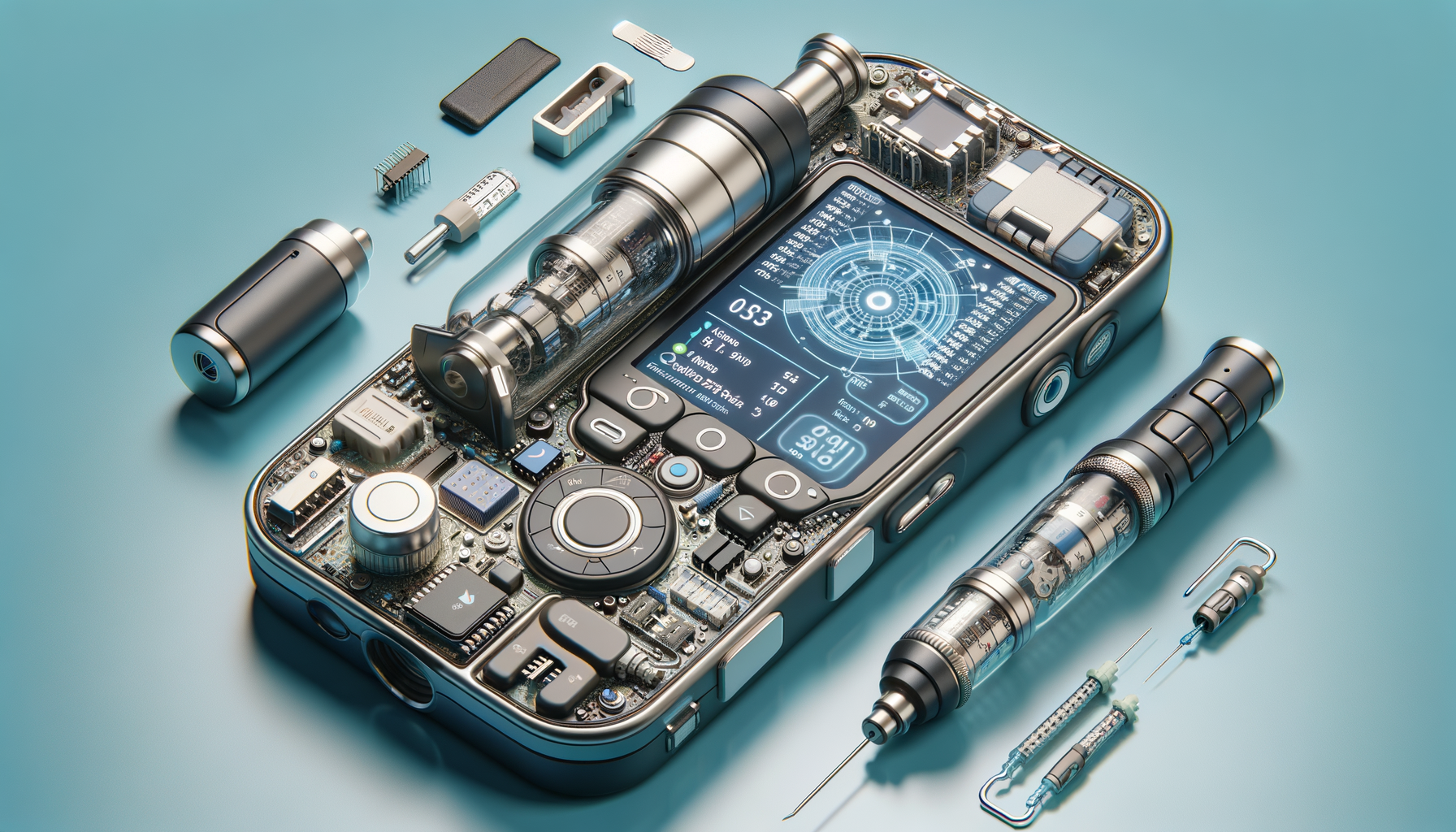Understanding Insulin Pumps
Insulin pumps are small, computerized devices that deliver insulin in a continuous, controlled manner. They mimic the way a healthy pancreas works by providing a steady flow of insulin to manage blood glucose levels. These devices are typically worn on the body, with a small catheter inserted under the skin. The pump administers insulin through this catheter, either continuously (basal rate) or as a surge dose (bolus) before meals.
One of the significant advantages of insulin pumps is their ability to offer more precise insulin delivery compared to traditional injection methods. This precision helps in maintaining stable blood sugar levels, which can reduce the risk of long-term complications associated with diabetes. Additionally, insulin pumps allow users to adjust their insulin delivery based on their activity levels and carbohydrate intake, offering greater flexibility in daily life.
Insulin pumps are suitable for people with type 1 diabetes and some individuals with type 2 diabetes who require intensive insulin therapy. They are particularly beneficial for those who experience frequent blood sugar fluctuations or have difficulty achieving target glucose levels with injections alone. While insulin pumps can offer significant benefits, they are not suitable for everyone. Individuals must be willing to monitor their blood glucose levels regularly and understand how to adjust their insulin doses.
Exploring Diabetes Management Tools
Diabetes management involves more than just insulin delivery. It requires a comprehensive approach that includes monitoring blood glucose levels, maintaining a balanced diet, and engaging in regular physical activity. Several tools and technologies are available to help individuals manage their diabetes effectively.
Continuous glucose monitors (CGMs) are one such tool that provides real-time data on blood glucose levels. These devices work by measuring glucose in the interstitial fluid and sending the data to a display device or smartphone. CGMs can alert users to high or low blood sugar levels, enabling them to make timely adjustments to their insulin doses or dietary intake.
Another essential tool in diabetes management is mobile health apps. These apps can track various health parameters, such as food intake, physical activity, and medication schedules. They often include features like reminders for medication and appointments, as well as educational resources to help users better understand their condition. Some apps even offer integration with CGMs and insulin pumps, providing a comprehensive view of one’s diabetes management.
In addition to technology, diabetes management also involves lifestyle modifications. A balanced diet rich in whole grains, lean proteins, and healthy fats can help maintain stable blood sugar levels. Regular physical activity, such as walking, cycling, or swimming, can improve insulin sensitivity and overall health. Together, these tools and practices form a robust diabetes management strategy.
The Role of Insulin Delivery Systems
Insulin delivery systems have evolved significantly over the years, providing individuals with diabetes more options and flexibility in managing their condition. The primary methods of insulin delivery include syringes, insulin pens, and insulin pumps. Each method has its unique advantages and considerations.
Syringes are the traditional method of insulin delivery and are still widely used today. They are cost-effective and allow for precise dosing. However, they require multiple daily injections, which can be cumbersome for some individuals. Insulin pens offer a more convenient alternative, with pre-filled cartridges and easy-to-use dosing mechanisms. They are discreet and portable, making them suitable for individuals with busy lifestyles.
Insulin pumps, as discussed earlier, offer continuous insulin delivery and greater flexibility in managing blood glucose levels. They eliminate the need for multiple daily injections and allow for more precise insulin dosing. However, they require regular monitoring and maintenance, which may not be suitable for everyone.
Choosing the right insulin delivery system depends on various factors, including the individual’s lifestyle, preferences, and insulin needs. Healthcare providers can help individuals weigh the pros and cons of each method and determine the most suitable option for their specific situation. Regardless of the method chosen, effective insulin delivery is crucial for maintaining optimal blood glucose control and preventing diabetes-related complications.
Comparing Insulin Pumps and Other Delivery Methods
When considering insulin delivery methods, it’s essential to understand how insulin pumps compare to other options like syringes and insulin pens. Each method has its benefits and limitations, and the choice often depends on personal preferences and lifestyle considerations.
Insulin pumps provide continuous insulin delivery, which can lead to more stable blood glucose levels. This method is particularly advantageous for individuals who experience frequent fluctuations in their blood sugar or have difficulty maintaining target levels with injections alone. Pumps also allow for more precise dosing, which can be beneficial for those with varying insulin needs throughout the day.
On the other hand, syringes and insulin pens require multiple daily injections but offer simplicity and cost-effectiveness. They are easy to use and do not require the same level of maintenance and monitoring as insulin pumps. For individuals who prefer a straightforward approach to insulin delivery, syringes and pens may be more suitable.
Ultimately, the decision between an insulin pump and other delivery methods should be made in consultation with a healthcare provider. They can help assess the individual’s diabetes management needs and lifestyle factors to determine the most appropriate option. While insulin pumps offer many benefits, they may not be necessary or practical for everyone.
Considerations for Choosing an Insulin Pump
Choosing an insulin pump is a significant decision that requires careful consideration of various factors. It’s essential to evaluate both the technical aspects of the pump and how it fits into one’s lifestyle and diabetes management routine.
One of the first considerations is the pump’s features. Different pumps offer varying levels of programmability, connectivity with other devices, and user interface designs. Some pumps integrate with continuous glucose monitors (CGMs), providing a more comprehensive diabetes management solution. Others may offer customizable alerts and reminders to help users stay on track with their insulin delivery.
Another critical factor is the pump’s size and portability. Since insulin pumps are worn on the body, it’s important to choose a device that is comfortable and easy to carry. Some pumps are designed to be discreet, while others may offer larger screens for easier navigation. Users should consider their daily activities and preferences when selecting the most suitable pump.
Cost is also an important consideration. Insulin pumps can be a significant investment, and it’s essential to understand the associated expenses, including the cost of supplies and maintenance. Insurance coverage may vary, so individuals should check with their providers to determine what costs are covered.
Finally, support and education are crucial when transitioning to an insulin pump. Users should seek guidance from healthcare professionals and take advantage of training resources offered by pump manufacturers. This support can help individuals feel confident in managing their diabetes with the new device and ensure a smooth transition.
Conclusion: Empowering Diabetes Management Through Technology
In the realm of diabetes management, insulin pumps represent a significant advancement, offering individuals the flexibility and precision needed to maintain optimal blood glucose levels. By integrating technology with traditional diabetes care practices, insulin pumps provide a comprehensive solution for those seeking improved control over their condition.
While insulin pumps are not suitable for everyone, they offer a viable option for many individuals who require intensive insulin therapy. By understanding the benefits and limitations of insulin pumps, as well as other diabetes management tools, individuals can make informed decisions about their care.
Ultimately, the choice of an insulin delivery system should be guided by personal preferences, lifestyle considerations, and the advice of healthcare professionals. With the right tools and support, individuals with diabetes can achieve better health outcomes and enjoy a higher quality of life.




Leave a Reply